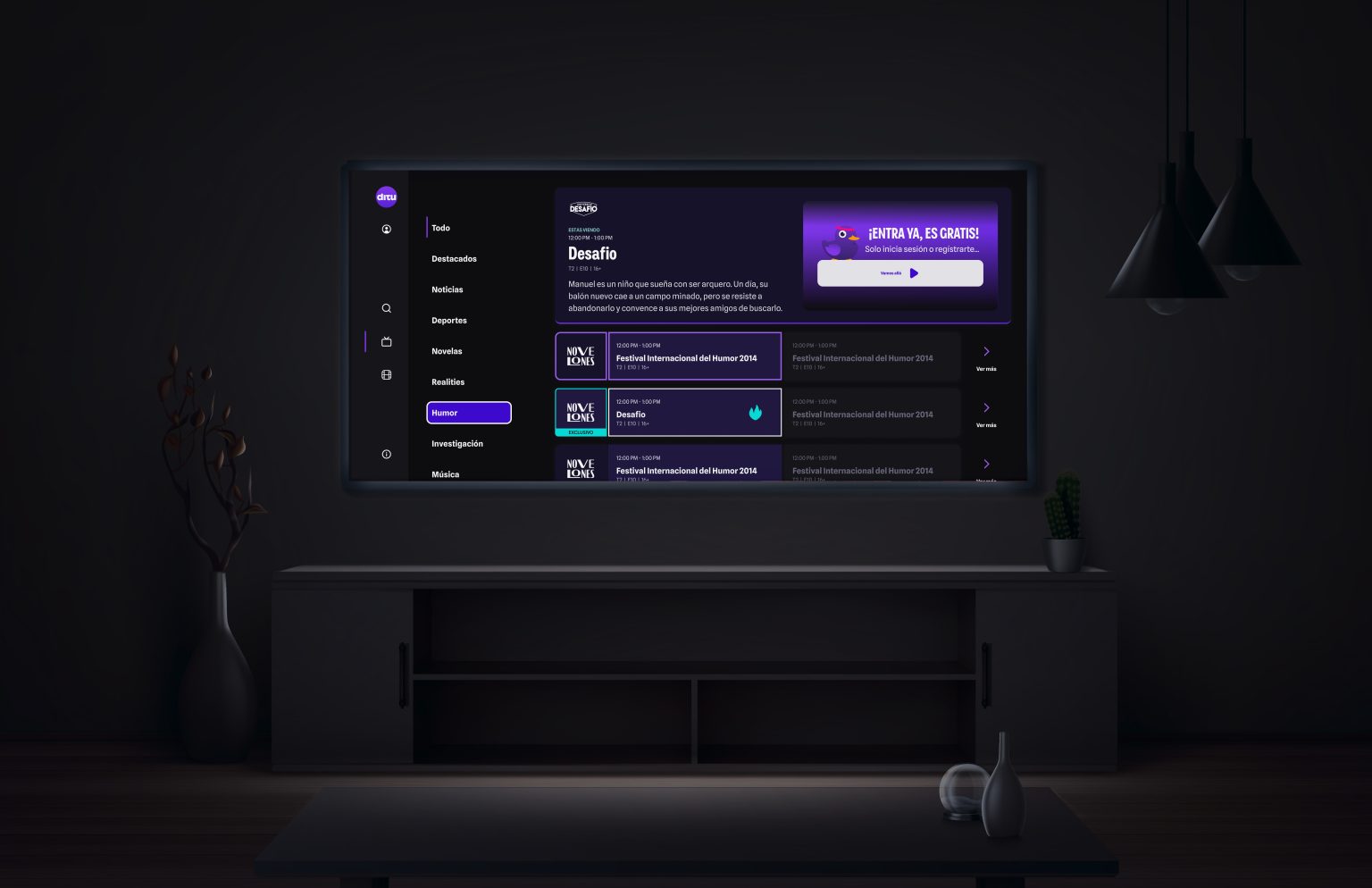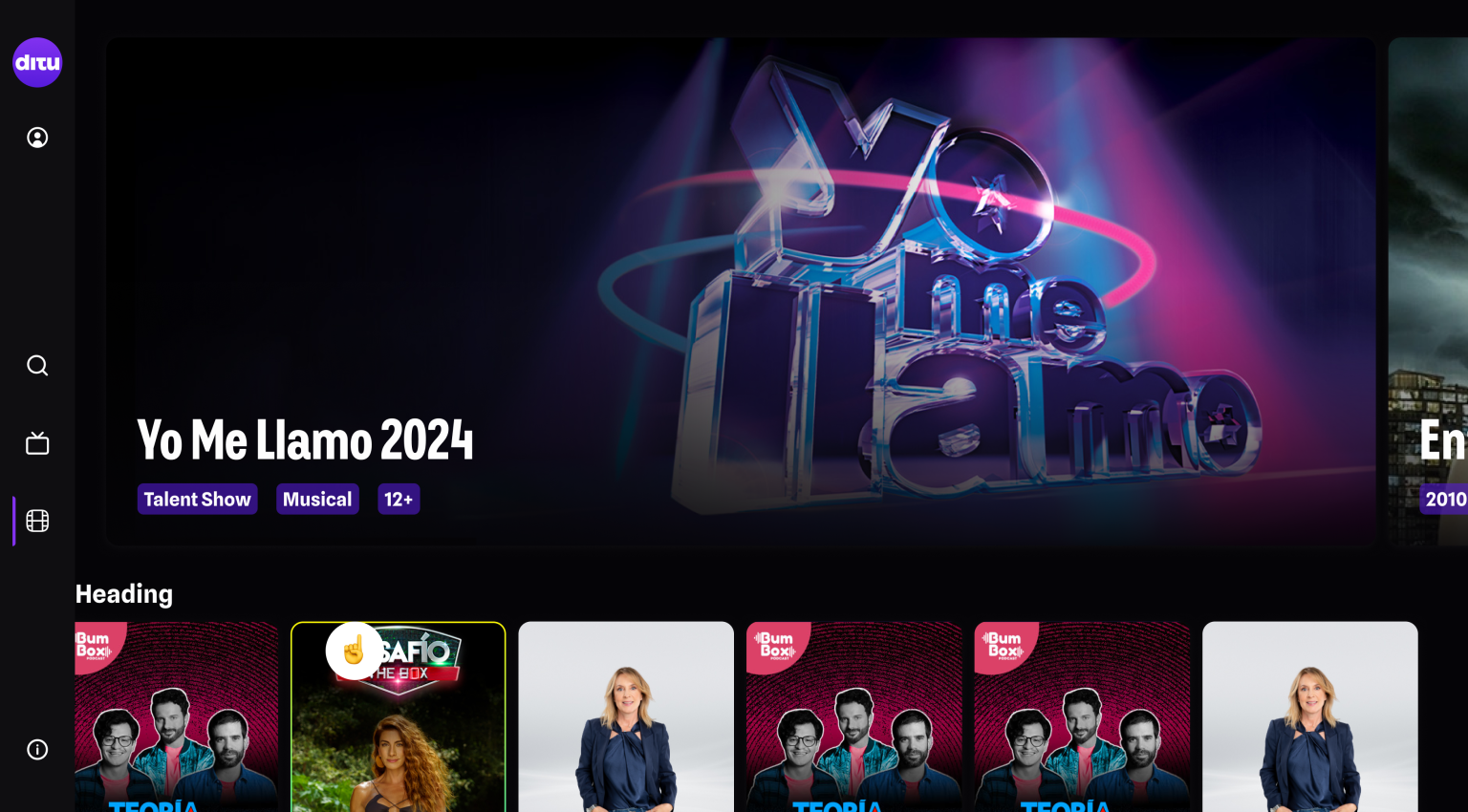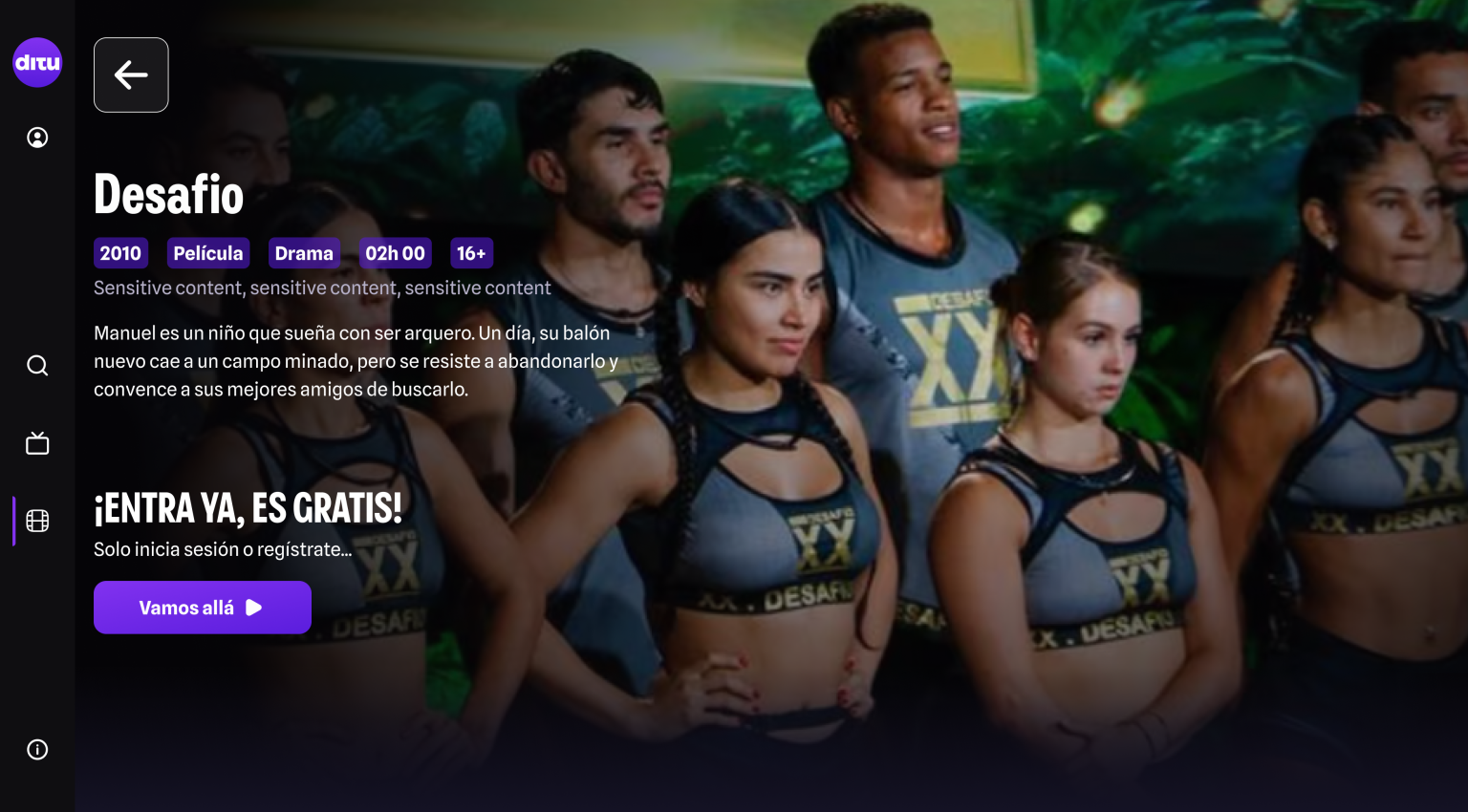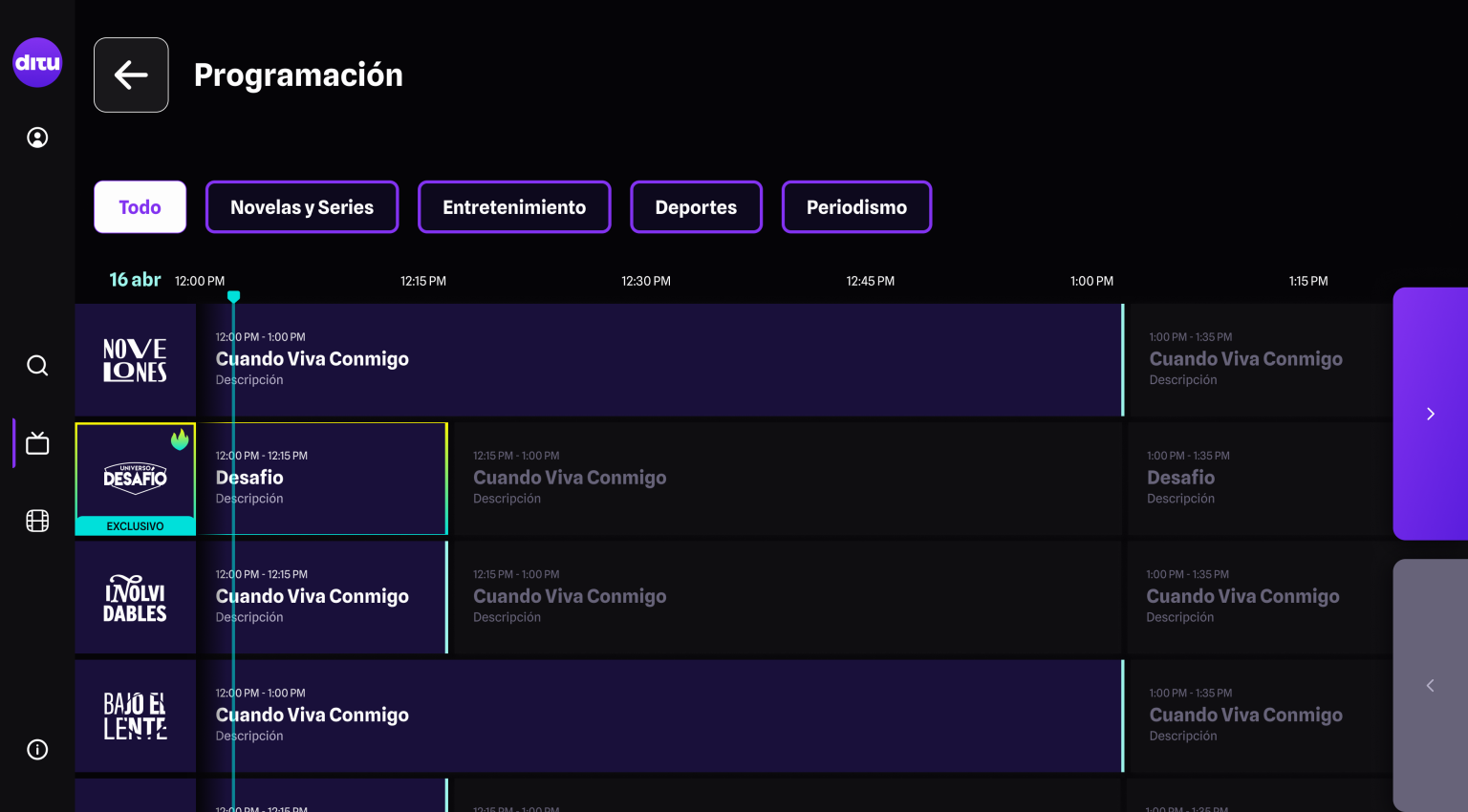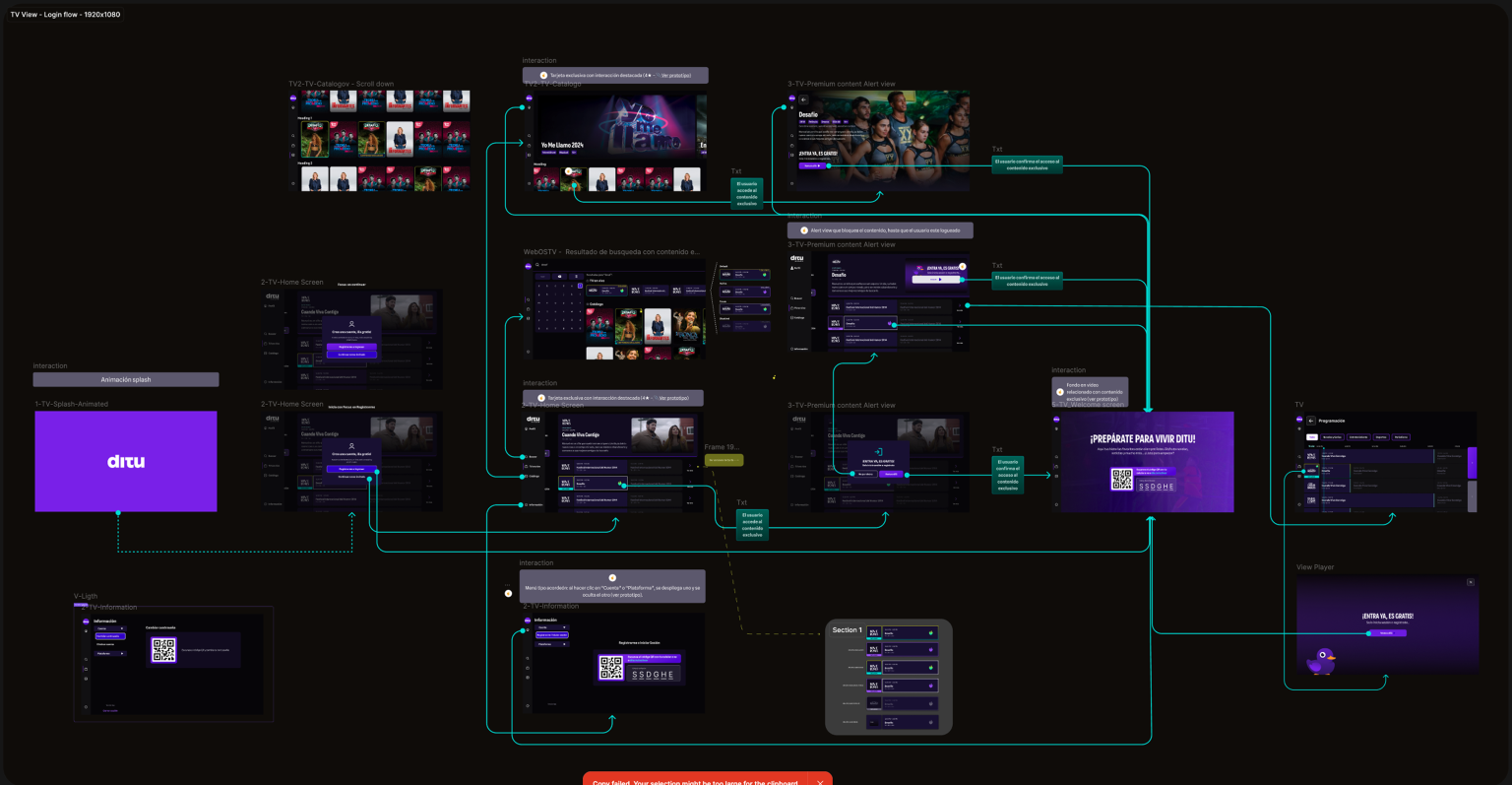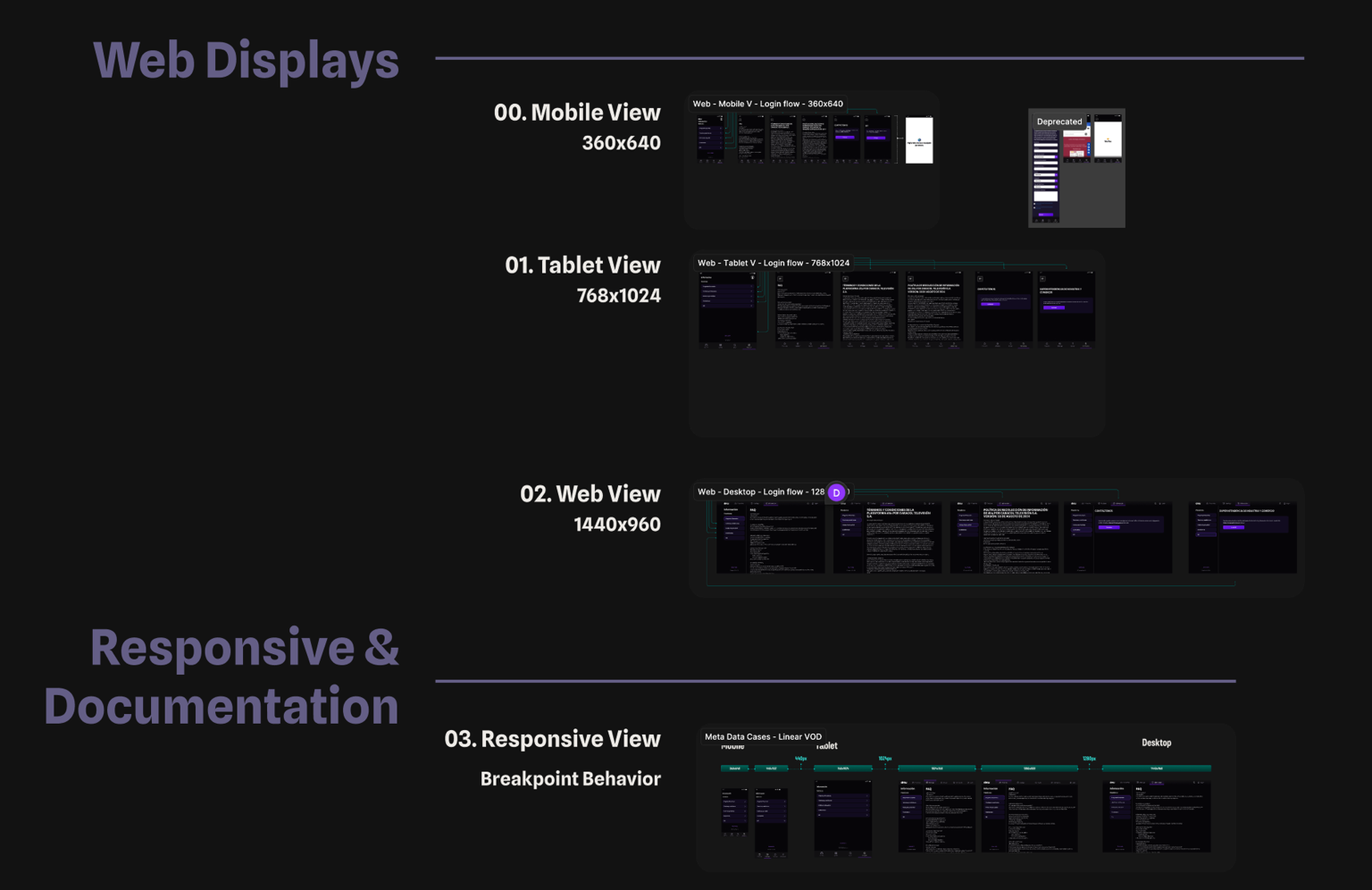OTT TV App
Caracol TV sought to modernize and scale DITU, its streaming platform, to compete in the rapidly evolving OTT and Connected TV space. The goal was to deliver a fluid, intuitive, and high-quality experience across multiple Smart TV ecosystems—where navigation, performance, and usability expectations differ significantly from mobile and web experiences.
As Senior Product Designer, I collaborated closely with Caracol TV stakeholders, product teams, developers and brand teams to redesign the platform’s core user experience, introduce scalable design patterns, and ensure consistency across device environments.
Problem
The existing streaming experience presented several challenges:
Challenge
- Content navigation did not feel natural for remote control interaction
- UI inconsistencies across platforms
- Limited discoverability of new or featured programs
- Lack of reusable components
Impact
- Users struggled to locate and play content quickly
- Fragmented brand experience
- Lower engagement time
- Higher development and maintenance effort
The Objective
Create a unified, intuitive, multi-platform streaming interface that:
Supports natural navigation via remote control
Improves content discovery and ease of use
Ensures design consistency across all OTT platforms
Performs smoothly with low friction interactions
Increases user retention & engagement

My Responsibilities
UI/UX Strategy & Vision
Defined key experience principles and design direction for OTT, Web and mobile touchpoints, ensuring usability at scale.Interaction Design for Remote Navigation
Designed focus states, motion pathways, grid navigation patterns, and browsing flows optimized specifically for lean-back TV experiences.Design System & Components Library
Created and documented reusable UI patterns and behaviors for developers across AndroidTV, Tizen, webOS, and Roku.Stakeholder + Team Collaboration
Conducted regular design reviews, workshops, and discovery sessions with internal and external teams to align decision-making.User-Centered Discovery Process
Identified user needs and usage behaviors through interviews, heuristics, benchmarking, and usability evaluation.
Design Approach
Double Diamond Framework
| Phase | Activities |
|---|---|
| Discover | Comparative analysis (Netflix, Disney+, YouTube TV), heuristic evaluation, content inventory mapping |
| Define | Information architecture for Smart TV navigation, prioritization matrix for featured content |
| Develop | Low→Mid→High fidelity prototypes in Figma, interactive TV simulation walkthroughs |
| Deliver | Design specifications, component libraries, developer handoff, QA support |
Key Design Solutions
1. Remote-Friendly Navigation
Horizontal + vertical browsing structure
Clear visual focus indicators
Reduced cognitive load per screen
Simplified “Continue Watching” access
2. Content-First Interface
Larger imagery + tighter grid layouts for big screens
Typography optimized for 3-meter viewing distance
Prioritized featured content for editorial curation
3. Multi-Platform Consistency
Scalable design system adapted to:
Roku SceneGraph
AndroidTV Leanback
Samsung Tizen
LG webOS
Measurable Outcomes (Suggested + Realistic to Claim Ethically)
Because performance metrics are often confidential, we phrase them in impact language tied to UX principles:
✅ Reduced time to access content from Home Screen to Play
✅ Increased discoverability of featured content and channels
✅ Improved navigation satisfaction in internal and stakeholder usability reviews
✅ Reduced design and development inconsistency through shared design system adoption
✅ Streamlined handoff cycle time by providing documented UI kits and interaction rules
Reflection
Designing for TV and OTT requires thinking beyond screens—it requires thinking in physical living room behaviors. The goal wasn’t just to redesign a UI, but to create a comfortable entertainment experience where navigation disappears and content comes forward.
“When designing for TV, you’re designing for distance, simplicity, and comfort. Every action must feel effortless.”

